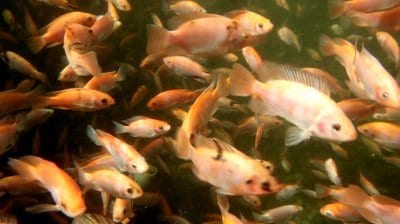USSEC Hears SWOT Analysis For Indonesian Finfish Aquaculture Industry
- Category:
- Aquaculture

Although Indonesia is an archipelagic country with the second longest coastal line after Canada and with a seawater area of nearly 100,000 square kilometers, Indonesian aquaculture production only contributes about 7 percent of the global farmed fish production. Worse, aquaculture production was dominated by freshwater, not marine, finfish aquaculture, including tilapia, clarias catfish, pangasius and common carp.
Erwin Suwendi, head of Nutrition and Quality Control, Aquaculture Division of PT. Suri Tani Pemuka (STP) of Japfa Group, a leading fish feedmill in Indonesia, presented this issue at The Aquaculture Roundtable Series (TARS) 2017 held in August in Bali. He further contended that aquaculture faces many challenges such as weak purchasing power, shortage of qualified seeds, climate change, poor regulation and management of water resources, frequent disease outbreaks, and environmental pollution. On the other hand, there is a growing momentum for more responsible and sustainable aquaculture through technology and a nutritional holistic approach.
He presented the SWOT (strengths, weaknesses, opportunities and threats) points of Indonesian aquaculture industry from his personal view. Strengths included: high biodiversity; government support; affordable manpower; abundance of local ingredients; and complete equipment availability. Weaknesses include: poor seed quality and availability; inefficient transportation resources; limited R&D capacity; limited farmers’ capability; and relatively high cost. He sees several opportunities: huge potential areas; growing economy; local and global market expansion; stagnation of wild fisheries; and technology application. Threats consist of: disease outbreaks; environmental pollution; restrictive regulation; land/water use conflict; and foreign competitors
He also suggested some countermeasures for the ten weakness and threat points. In summary, collaborative research and work are absolutely needed among aquaculture stakeholders: fish farmers, and private sectors, as well as government bodies to minimize or to resolve those problems in Indonesian aquaculture industry.
USSEC Southeast Asia - Aquaculture Indonesia has been conducting feed-based aquaculture trials on tilapia fish farming in floating net cage culture system in Lake Toba, North Sumatra using U.S. Soy in feed ingredients to sustain the aquaculture production system in the lake. This trial, which collaborates with PT. STP Feedmill and PT. STP Fishfarm, is proposed to implement a more responsible and sustainable aquaculture industry through technology and nutritional holistic approach.
